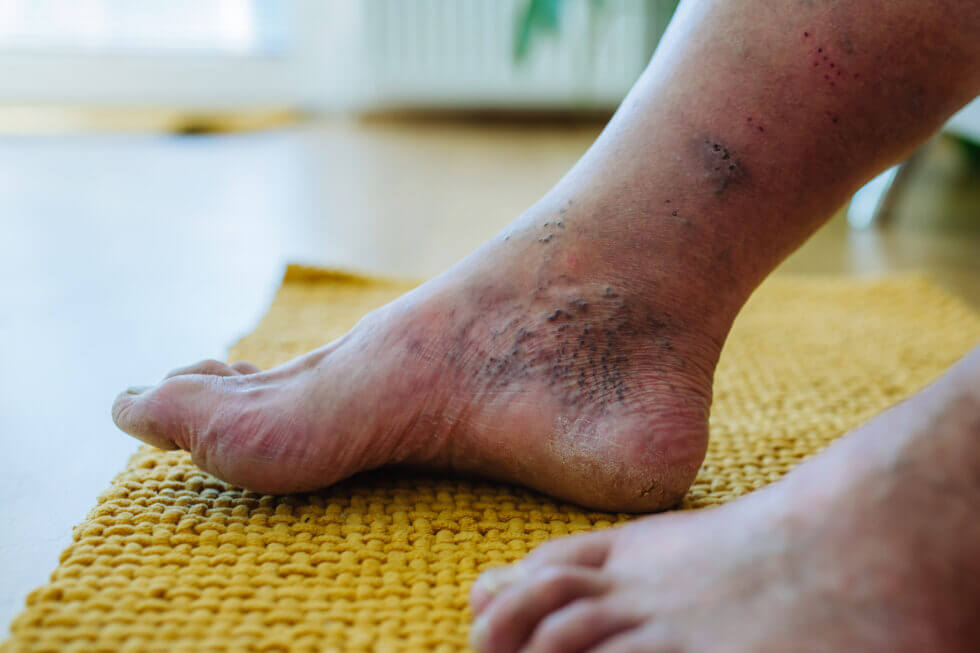Bye-Bye, Discoloration! Your Guide to Healthy, Happy Feet with a Podiatrist
Ever stared down in dismay at your feet, only to find them sporting a curious tapestry of hues? From patchy blues to stubborn browns, foot skin discoloration can be an embarrassing and confusing issue. But before you resign yourself to a life of hidden socks and frantic shoe-switching, there’s hope! Enter the foot wizards themselves – podiatrists – your partners in crime for reclaiming vibrant soles and confident strides.
Decoding the Rainbow on Your Tootsies:
Understanding why your feet have turned into an art project is the first step towards restoring their natural beauty. The culprit behind your foot’s color change can be a diverse cast of characters, including:
- Fungal foes: Athlete’s foot, a common fungal infection, often presents with itchy, red, and scaly patches, potentially leading to discoloration.
- Vascular villains: Conditions like venous insufficiency, poor circulation, and diabetes can affect blood flow to the feet, causing redness, purple patches, or even ulcers.
- Trauma troopers: Scars from injuries, burns, or pressure can leave behind permanent marks on the skin.
- Chemical culprits: Certain medications, topical creams, and even contact with harsh chemicals can trigger temporary or permanent discoloration.
- Pigmentation perils: Conditions like melasma and post-inflammatory hyperpigmentation can affect any body part, including the feet, leading to darker patches.
When to Ditch the DIY and Call the Foot Doc:
While some mild discoloration might require nothing more than over-the-counter remedies and improved foot hygiene, others might be red flags (pun intended) for underlying health issues. Here’s when it’s time to step into your podiatrist’s office:
- Persistent discoloration that doesn’t improve with home care.
- Discoloration accompanied by pain, itching, or burning.
- Changes in the texture or thickness of the skin.
- Suspicion of an underlying medical condition like diabetes or venous insufficiency.
Your Podiatrist: The Superhero for Radiant Soles:
Don’t think of your podiatrist as just a toenail trimmer! These foot experts are diagnosticians extraordinaire, armed with a toolbox of techniques to decipher the mystery behind your skin’s color code. They might utilize:
- Physical examination: A thorough visual inspection and assessment of your overall foot health.
- Cultures and blood tests: Identifying potential fungal or bacterial infections.
- Imaging tests: X-rays or ultrasounds to rule out underlying bone or vascular issues.
- Biopsies: In rare cases, a small sample of skin might be needed for further analysis.
Unleashing the Arsenal of Treatments:
Once the culprit is identified, your podiatrist will craft a personalized treatment plan to banish the discoloration and restore your happy feet. The arsenal might include:
- Topical medications: antifungal creams, steroids, or other ointments to address specific skin conditions.
- Oral medications: antibiotics for bacterial infections or specific medications for underlying conditions.
- Laser therapy: For treating vascular lesions or pigmentation issues.
- Debridement: Gently removing thickened or damaged skin to reveal healthier tissue.
- Home care recommendations: Proper foot hygiene, moisturization, and footwear adjustments to prevent future discoloration.
Your Journey to Happy, Healthy Feet:
Restoring vibrant soles isn’t just about aesthetics; it’s about reclaiming confidence and embracing healthy foot care habits. Here are some tips to keep your feet happy and discoloration-free:
- Wash your feet daily with warm water and gentle soap. Dry thoroughly, especially between the toes.
- Moisturize regularly to prevent dry, cracked skin. Apply lotion after showering or bathing.
- Wear well-fitting shoes made from breathable materials. Avoid tight-fitting shoes or high heels for extended periods.
- Protect your feet from the sun. Wear sunscreen on your feet when outdoors, especially if you have sensitive skin.
- Manage underlying health conditions: If you have a condition like diabetes or venous insufficiency, follow your doctor’s treatment plan to manage it effectively.
Visit your podiatrist regularly for checkups and preventive care.
Stepping into Confidence with Every Stride:
Remember, foot skin discoloration may be a temporary visitor, not a permanent resident. With the help of your trusty podiatrist, you can decipher the mystery behind your funky hues, unleash the arsenal of treatments, and most importantly, step into a world of vibrant, healthy feet. So, ditch the doubts, embrace confident strides, and let your radiant soles lead the way!


